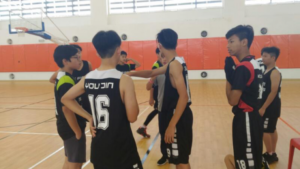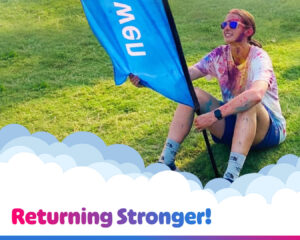Now we know what movement words are and how they can not only link the learning of movement and language but also use these two learning areas to motivate each other.
I would like to share my experience of using movement words within a Dance unit. Although I find teaching dance challenging, using movement words allowed for a whole new focus. Furthermore, the cross-curricular links made with English showed great results.
Communication with classroom teachers is vital, so I began by visiting the classroom teacher for my Grade 3 & 4 classes. Although they have PE together, they are separated for English, Maths and Science.
The images below show the focus for PE, the focus for English and the links myself and the classroom teacher agreed on.
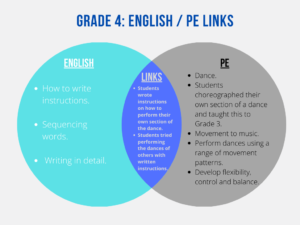
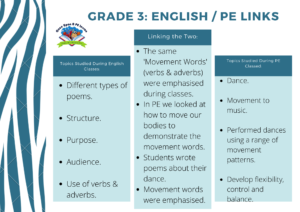
The link with dance was easy to make yet meaningful for the students.
We could use movements within our dance to allow students to experience the actions of movement words. Students could feel how to move slow, smooth, jerky and explosive. Students could experiment with using the best music to match different types of movements.
As students were writing poems or instructions in English lessons, their dance could be their focus. This way students were writing about something they had experienced, something they could be proud of.
Here’s a more detailed breakdown of how I taught my Dance module.
Most importantly I made the cross curricular link known to the students from the start. Students were also made aware of what their end goal was.
INTRODUCTION:
- I introduced the module as movement to music to avoid the common comments, “I can’t dance”, or “Dancing is for girls”.
- I showed a video of Diversity dancing on Britain’s Got Talent. This group is made up mainly of males = Boys can dance!
- I showed a video of me performing the dance that we would learn together as a class. The students enjoyed watching me dance.
WEEKLY LESSON STRUCTURE:
- We focused on four different movement words per lesson.
(For a list of movement words follow the link https://onceuponapelesson.com/resources/ ).
I would play a pieces of music which I believe created a sound to express these movement words (students were quick to ‘recommend’ better songs, which was great!) and students would move from point A to point B performing movements which showed this movement word.
I was amazed by the students’ imagination and creativity! I had an idea in my head of what I expected to see, however the students’ own movements were far better than what I could have ever imagined. This activity was performed at the beginning of each lesson with a focus on different movement words each lesson.
- We then worked on a whole class dance for a couple of weeks. We would practice together and then students would practice independently in small groups.
- There were eight more beats of music to until the chorus started. Each group created their own movements to this music. We spent two weeks rehearsing our class dance and the breaking out in to smaller group practices to the same music.
- For the next two weeks I went off my plan, something that shouldn’t worry me, but it does. However, it should be done more often as flexibility is important. Students were desperate to use their own music and create their own dance. I loved the enthusiasm and students had worked hard to learn the dance so far. So “Yes”, I allowed students to create dances to their own music. It was great watching students work independently. At the end of our last lesson, each student performed their dance. These videos can be found on my twitter @Rach061992
- After each lesson, I informed the class teacher of which movement words we had focused on so that she could use the same words during her lessons.
- During English classes videos of the students dances were played and for their English assessment, students wrote poems or instructions about their dance.
I hope these steps help to show how easy cross-curricular links with movement and language can be. I have never enjoyed teaching a dance unit so much!
The students’ work below also shows how meaningful these links can be.

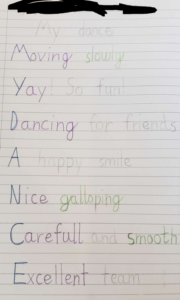
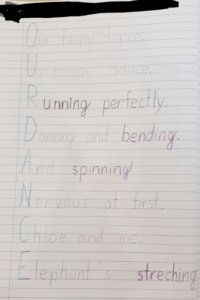
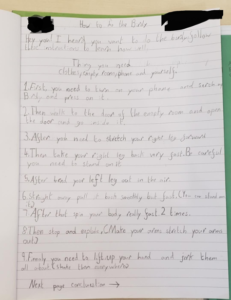
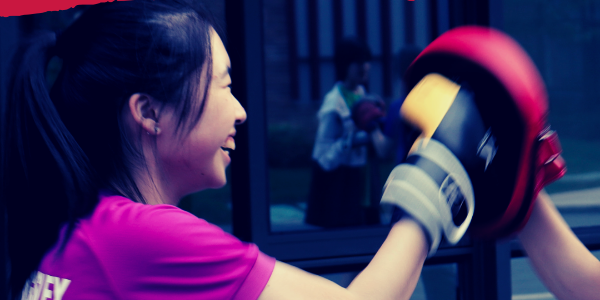
This Girl Can.
Rachel Ford
•
July 10, 2021
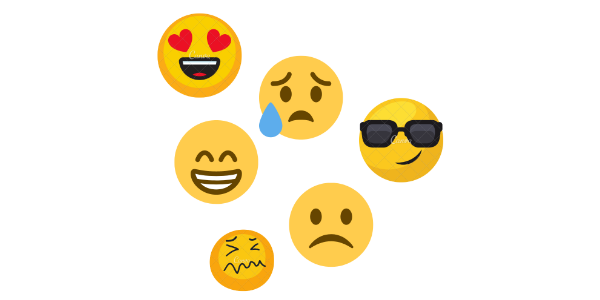
It’s Just a Game: By Whose Account?
Rachel Ford
•
January 10, 2021

How I Brought a Love of PE to Reluctant Female Learners
Rachel Ford
•
November 15, 2020


